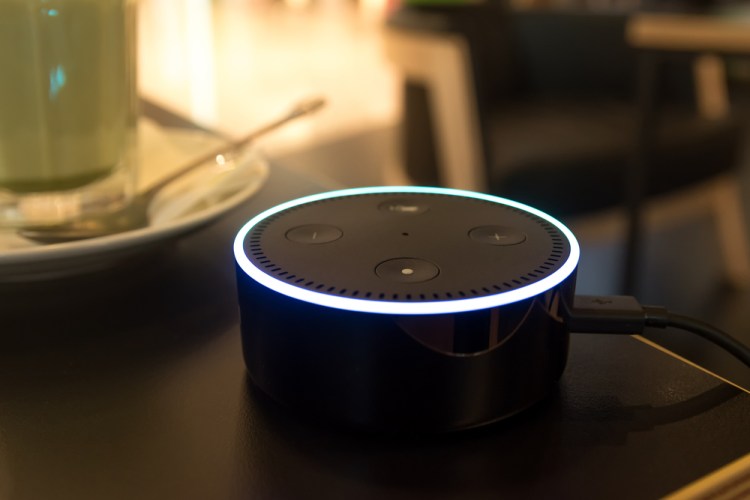Gartner says that by 2020, there will be 20 billion internet-enabled devices and machines. How do you to create frictionless download and shopping experiences across an enormous spectrum of smart, connected devices? Catch up on the latest VB Live event and hone in on the fastest, best ways to prepare for an IoT world.
Don’t miss out! Access on demand right here.
Analysts see an IoT future: connected homes, connected health, connected cars, and connected cities, and the impact on the consumer is going to be significant. By 2020 depending on which estimates you listen to, there’s going to be between five and six billion people with smartphones who are going to be online, there’s going to be 25 billion devices and machines using the internet – including refrigerators, if they ever get that right.
“That massive increase is where the massive opportunity comes in,” says Kevin Gordon, Lead Innovation Architect at Worldpay. “Monetization is important for companies globally.”
Connected devices offer an unprecedented amount convenience, and people are prepared to pay for that convenience – seamless, frictionless experiences in which machines make rules-based decisions and payments are invisible. For example, the automatic re-stock action set up for cat food, or your Uber account, where payment is considered authorized as soon as you get in your taxi.
Consumers are also increasingly willing to interact with devices, as the sales of smart speakers like Alexa and Google Home show, and over two-thirds of people worldwide are comfortable with using those kinds of devices for booking trips and paying things. But there’s a tension between the demand for convenience versus how much data a consumer is willing to sacrifice – including payment data.
“Translucent” payments are the way to give control back to the consumers, says Gordon.
“You have to give consumers control of the autonomous rules that determine the payments and when they happen, as well as the contexts of those payments, so they understand what the payments come from,” Gordon says. “But then to overcome the consumer’s concerns, you’ve got to also look at liability — who’s liable for when things go wrong?”
And things do go wrong. While there’s a tremendous amount of consumer trust in connected devices, and they’re letting machines make more and more decisions for them, keeping that trust is essential, and also tricky.
For instance, the kid who asked Alexa to please buy her a dollhouse and some cookies, which were purchased via her parent’s account — and delivered — much to their great bewilderment. When a local tv news channel ran the story, repeating the entire phrase that the child used to wake up Alexa, thousands of Alexas overheard the broadcast and all of them ordered doll’s houses and cookies.
“We talk about removing friction, but there’s actually need to add friction that’s appropriate, such as, being asked for your social media profiles to authenticate you, or a personal notification to another device for confirmation, or in fact using biometric finger ID,” Gordon says. “It’s easier to fool a device than it is a human.”
Which means that security is the biggest technological barrier to overcome across the entire IoT ecosystem.
“To a certain extent, IoT is going to be like the Wild West and we need to be able to appropriately secure smart devices to be able to transact,” he explains. “Those transactions aren’t just payments — if you’ve got a health IoT device, it’s paramount that it’s quite secure and keeps its data confidential.”
There are a number of technological tactics or routes to securely leverage connected devices for payments. It all depends, of course, on the maturity of your company’s own in-house IT resources whether you’ll build out your solution on premises, choose an off-the-shelf solution, or choose to partner with a trusted payments company. The payments industry has kept a sharp eye on the IoT revolution coming, and most are actively researching enterprise-grade solutions to make a company’s entrance into the connected device world seamless.
“For me, the internet of things has the potential to be the ultimate way to make the payment experience invisible,” Gordon says.
Don’t miss The Connected Consumer, WorldPay’s IOT study of over 20,000 consumers in ten countries.
Access this VB Live event on demand right here.
Catch up on this VB Live event to learn:
- How companies are already dealing with device connectivity
- How the challenges posed by IoT are being solved for today
- Global consumer attitudes around payments made by devices
- How payments will become ‘invisible’ or ‘translucent’ for users
- Payment technology that will enable devices to make decisions
Speakers:
- Kevin Gordon, Lead Innovation Architect, Worldpay
- Stewart Rogers, Analyst-at-Large, VentureBeat
- Rachael Brownell, Moderator, VentureBeat
Sponsored by: Worldpay

